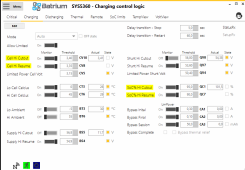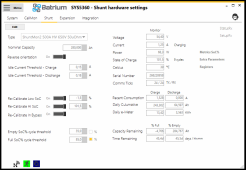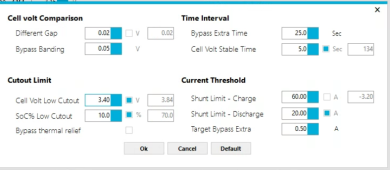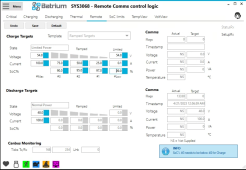Hoping someone can help. Ive been searching the web, forums etc. for a answer to my question.
Im charging my pack to 54.0 volts. When i hit that, at some point, the victorn system will add 0.4 volts to the 54.4 volt since im exporting excess solar to the grid.
However it will keep charging at 54,4 volt for some time, serveral hours at around 30-40 amp until my soc hits 100% in the batrium system (99% in victron) and finally it ramps down to 3 Amp.
My batrium remote target is set for 54.0 in normal/100AMP and 54.0 in limited, 1 amp. But when i hit 54,0V it keeps going and slowly ramps down to 30-40 amp, and when i hit soc 100 it will return to 3 amp. I dont understand why. DVCC is enabled, so i assume my MPPT charge values are ignored, aswell as my Multiplus-II values set in Veconfigure. So something else is controlling this ramp down effect.
To my understanding victron doesnt care about set Amp values when i use DVCC, it only cares about voltage, but what defines my absorption charge time then????
Hope someone can help
Im charging my pack to 54.0 volts. When i hit that, at some point, the victorn system will add 0.4 volts to the 54.4 volt since im exporting excess solar to the grid.
However it will keep charging at 54,4 volt for some time, serveral hours at around 30-40 amp until my soc hits 100% in the batrium system (99% in victron) and finally it ramps down to 3 Amp.
My batrium remote target is set for 54.0 in normal/100AMP and 54.0 in limited, 1 amp. But when i hit 54,0V it keeps going and slowly ramps down to 30-40 amp, and when i hit soc 100 it will return to 3 amp. I dont understand why. DVCC is enabled, so i assume my MPPT charge values are ignored, aswell as my Multiplus-II values set in Veconfigure. So something else is controlling this ramp down effect.
To my understanding victron doesnt care about set Amp values when i use DVCC, it only cares about voltage, but what defines my absorption charge time then????
Hope someone can help










